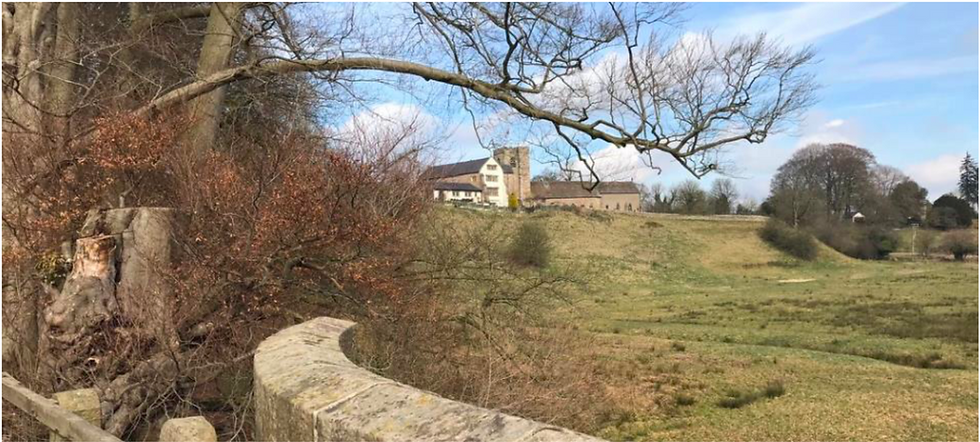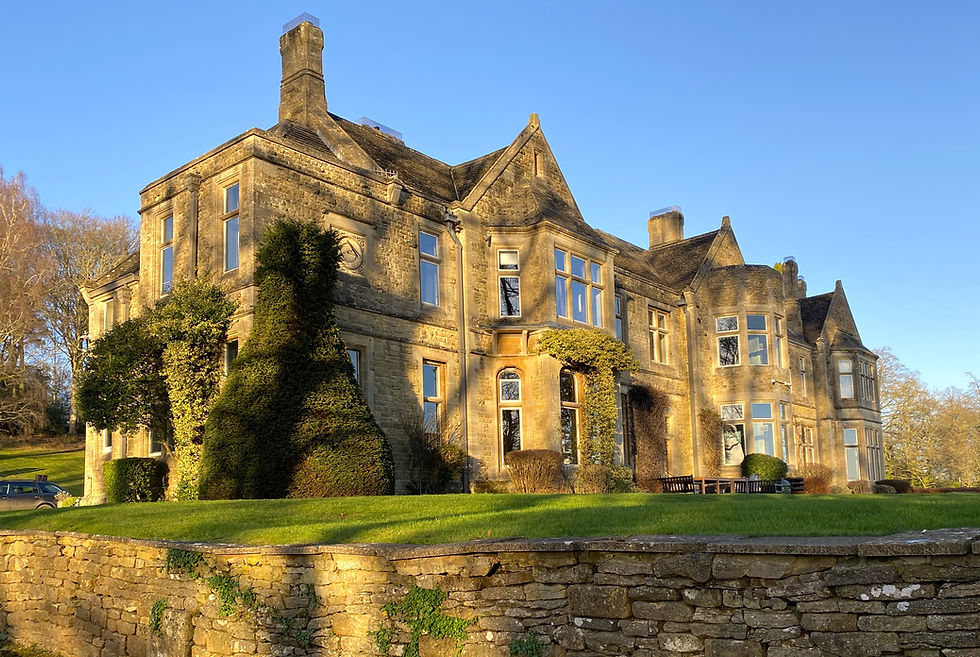Great Mitton Hall - "Public Benefit"
- jonathan45266
- Aug 22, 2020
- 7 min read
Dr Jonathan Edis, Director, HCUK Group

A short article on the importance of taking heritage-related public benefit into account in the planning balance – Kay v SSCLG [2020] EWHC 2292 (Admin).
Great Mitton Hall is a Grade II listed building in Mitton, Lancashire, dating from the 17th century. It stands next to the Church of All Hallows, which is listed Grade I, and it overlooks the River Ribble close to the Forest of Bowland AONB. I was first involved in this case in January 2018 when I was approached by Knights plc to advise their client, the owner of Great Mitton Hall, about the potential for extensions and alterations. I visited Great Mitton Hall in March 2018 and I then prepared a Heritage Assessment (May 2018) which was submitted with applications for planning permission and listed building consent to Ribble Valley Borough Council (3/2018/0474/P & 3/2018/0468). Essentially, the proposal involved an extension and some modifications to patio railings, and painting. Both applications were refused in July 2018, and appeals were subsequently submitted to PINS (APP/T2350/Y/18/3214150 and APP/T2350/Y/18/3214151).
In August 2019 Knights plc submitted further representations to PINS, including my own criticisms of the way that the Council had addressed the subject of harm when determining the applications. In November 2019 split decisions were issued in the case of both appeals, dismissing the extension and the painting but allowing other works to the patio. Significantly, the removal of a pointed arched doorway in an existing modern extension of the Hall was also allowed, on the basis that its deletion would be beneficial. It had been my view from the outset that the removal of this incongruous addition would be a good thing.
The appeal was determined by Inspector John Braithwaite, who concluded in paragraph 9 of his decision letter that the removal of the pointed arched doorway was “a positive alteration that would benefit the architectural and historic interest of the listed building.” This formed the basis for challenge, because in paragraph 13 of the same decision letter the Inspector said that there were no public benefits to weigh against the harm. The result of the challenge was that the appeal decision was quashed in the High Court on 21 August 2020 – The Queen (on the application of) Kenneth Kay v Secretary of State for Housing Communities and Local Government and Ribble Valley Borough Council [2020] EWHC 2292 (Admin).
I must be a little cautious in what I say here, because the appeal process will now have to be repeated, but I think I can safely and fairly quote from some of those passages in Mr Justice Dove’s judgment that are most relevant to public benefit in the balancing exercise – in this case, heritage-related public benefit. Mr Justice Dove set out the main (and determinative) ground of challenge in paragraphs 13 and 14 of the judgment as follows:
“13. It will be worthwhile to set out at this stage the grounds which are pursued in this challenge in brief. The claimant pursues two grounds. The first ground is the Inspector erred in law when he held that there were "no public benefits to be weighed" against such harm as he had identified from the proposals to the special historic interest of Great Mitton Hall. Mr John Hunter, who appears on behalf of the claimant, characterises that error in a number of ways. He submits that this was a failure by the Inspector to properly interpret the relevant paragraphs of the National Planning Policy Framework ("the Framework") related to this. The contention is that the Inspector failed to take account of a material consideration, namely the benefits which he had concluded would arise to the heritage assets from the improvement that would arise from the removal of the arched doorway, together with, potentially, the simplification of the railings which were proposed within the applications. In short, these elements of improvement were matters which the Inspector should have recognised as public benefits of the proposal and taken into account in striking the overall balance. His failure to do so was an error of law.
14. In response to these submissions Mr Killian Garvey, who appears on behalf of the defendant, contends that the Inspector was perfectly entitled to consider each of the elements of the proposal separately and to treat the application as comprising a number of severable elements. This approach entitled him to reach the conclusion that certain parts of the proposal before him could be granted consent whereas others, giving rise to harm to the listed building, had to be rejected. It was for the Inspector to determine how he approached the applications and there was no requirement that he should consider the whole development first, prior to giving consideration to treating the application as severable and considering its parts in turn. In truth, the application was presented as a suite of individual elements and there was no necessary linkage between them.”
The judgment is a long one, and I do not propose to try to analyse it here, but I quote from paragraph 30 where there is further explanation of the first and main ground of challenge:
“30. On behalf of the claimant, Mr Hunter's submissions in relation to ground 1 are in essence as follows. Firstly, and applying the interpretation of paragraph 196 of the Framework from Safe Rottingdean, it was incumbent upon the Inspector to solely examine the harmful effects of the proposals before him upon the heritage assets involved in the decision at the first stage of the analysis. Any beneficial effect in relation to the heritage assets came into the balance at a later stage. Mr Hunter submits that it is clear from the Inspector's report that he found that one element of the proposal, namely the removal of the arched doorway and its replacement with a matching window, would be a positive alteration of benefit to the listed building: see paragraph 9 of the decision letter.
Furthermore, he submits that the conclusion in paragraph 11 which the Inspector reached in relation to the replacement of the railings was, in effect, recognised as another improvement. Certainly, when read with paragraph 12 of the decision letter, he submits that no harm arises from the replacement of the railings, and this issue is at least neutral. He submits that the less than substantial harm that the Inspector found at paragraph 13 of the decision letter reflects an overall assessment based upon his conclusions in relation to the proposal before him in paragraph 12 of the decision letter. Where the Inspector then fell into error was in concluding that "there are no public benefits to be weighed against the harm caused". The Inspector had clearly found that one of the works included in the proposal would benefit the architectural and historic interest of the listed building, and therefore amounted to a public benefit which the Inspector failed to take into account. Thus, Mr Hunter submits that the Inspector failed to correctly interpret paragraph 196 of the Framework, and failed to have regard to a material consideration namely the public benefit that he had found from one of the works included in the proposal in paragraph 9 of the decision. Alternatively, there was a failure on the part of the Inspector to explain the conclusions which he had reached in paragraph 13 of the decision letter.”
Finally, I quote from paragraph 40 of the judgment, which effectively sets out Mr Justice Dove’s reasoning for quashing the appeal decision. I have underlined a passage that I believe summarises the gist of the matter.
“40. Although Mr Garvey contends that each of these individual elements were not linked, and their merits were isolated from each other, in my view that is an approach based upon an overly forensic review of the application documentation and without properly taking account of the realities of the situation. Whilst as a matter of judgment the heritage merits of the individual works might legitimately have their impact assessed separately, they are inevitably connected and inter-related on the facts of this case by reason not only of them being proposals in relation to the same listed building, but moreover on the basis that they were closely physically related to a particular aspect of the listed building. An alternative way of examining the connection or relationship is the simple point that it was the same particular aspect or elevation of the heritage asset which was being benefitted by the replacement of the pointed arch doorway that was being affected by the two proposals that the Inspector found less than substantially harmful. Different listed building applications comprising multiple works will give rise to different considerations which have to be considered on a case by case basis, but here whichever of the individual works were granted in combination would have an overall effect on the significance of the same part of the listed building, whether positive or negative. Whilst in some cases it may be necessary for an applicant to point out any potential linkage or inter-relationship between parts comprised in a proposal, in the present case the relationship between the parts of the proposal, which all related to a particular part of the listed building, was clear and obvious. For instance, the pointed arch window and its proposed beneficial replacement is in the same elevation of the same extension, and immediately adjacent to, the proposed further extension to that extension which the Inspector concluded was harmful. Thus, even if the Inspector had been considering the works comprised in the proposal separately, that did not permit him to leave out of account in considering the merits of a work comprised in the proposal which he considered gave rise to less than substantial harm to the heritage asset, the public benefits from a work comprised in the proposal which he considered was an enhancement of the heritage asset given, and this must be emphasised, the particular circumstances of the present case. The public benefit was material in terms of the policy which was being applied and was, in any event, obviously material to the decision being taken for the reasons set out above.” (With added emphasis)
Whether there will be wider implications arising from this judgment I cannot say or guess, but to me it emphasises the need for everyone, and for decision makers in particular, to be very specific as to how public benefit is addressed in the balancing exercise, whether it is heritage-specific public benefit or whether it is some other form of public benefit. A vast amount of effort goes into establishing the level of harm when dealing with change affecting heritage assets. It is equally important to be clear as to the effect of public benefit within the planning balance.
The full judgment can be seen here: https://www.bailii.org/cgi- bin/format.cgi?doc=/ew/cases/EWHC/Admin/2020/2292.html&query=(%22mitton+hall%22)
.png)



Comments